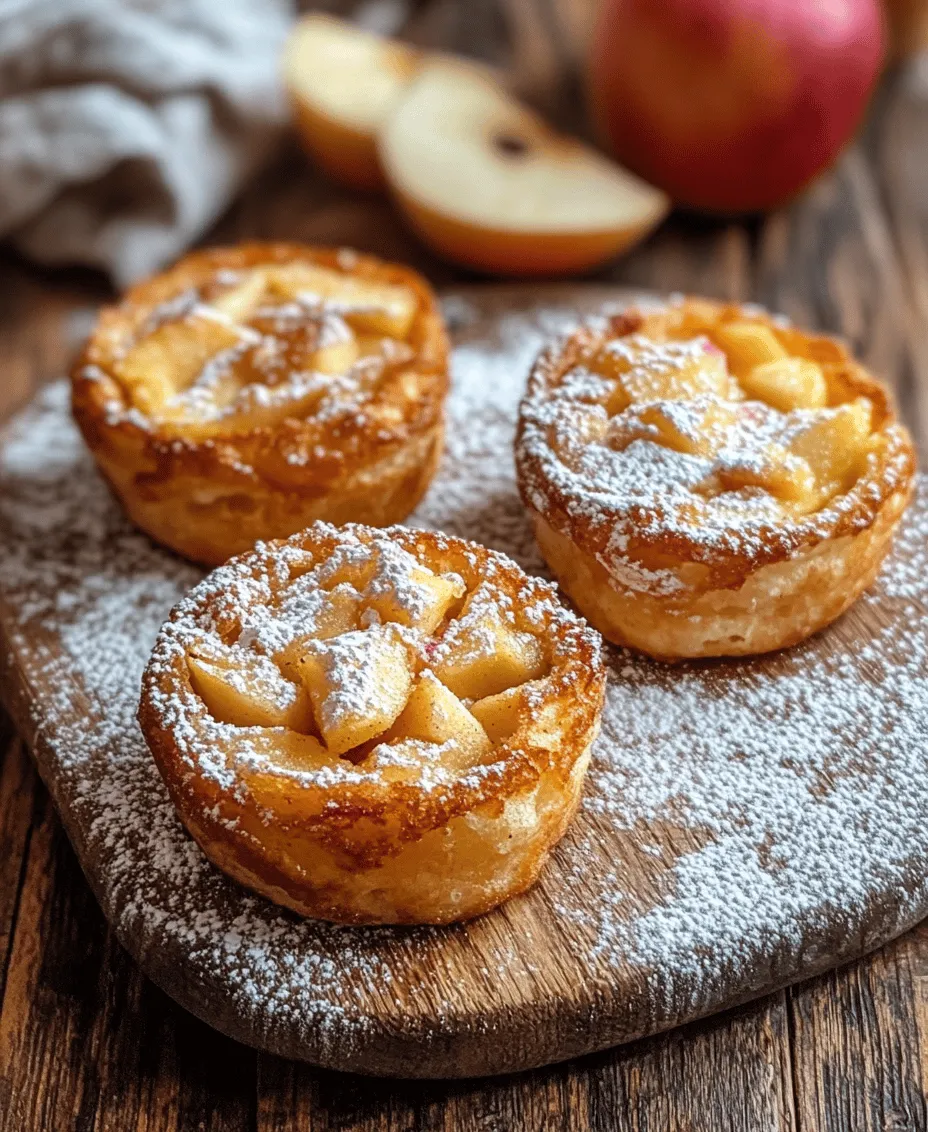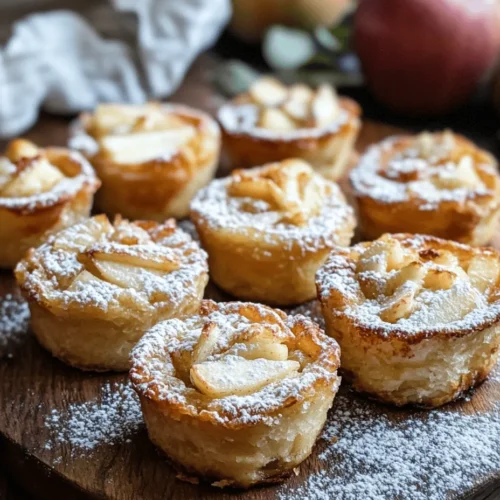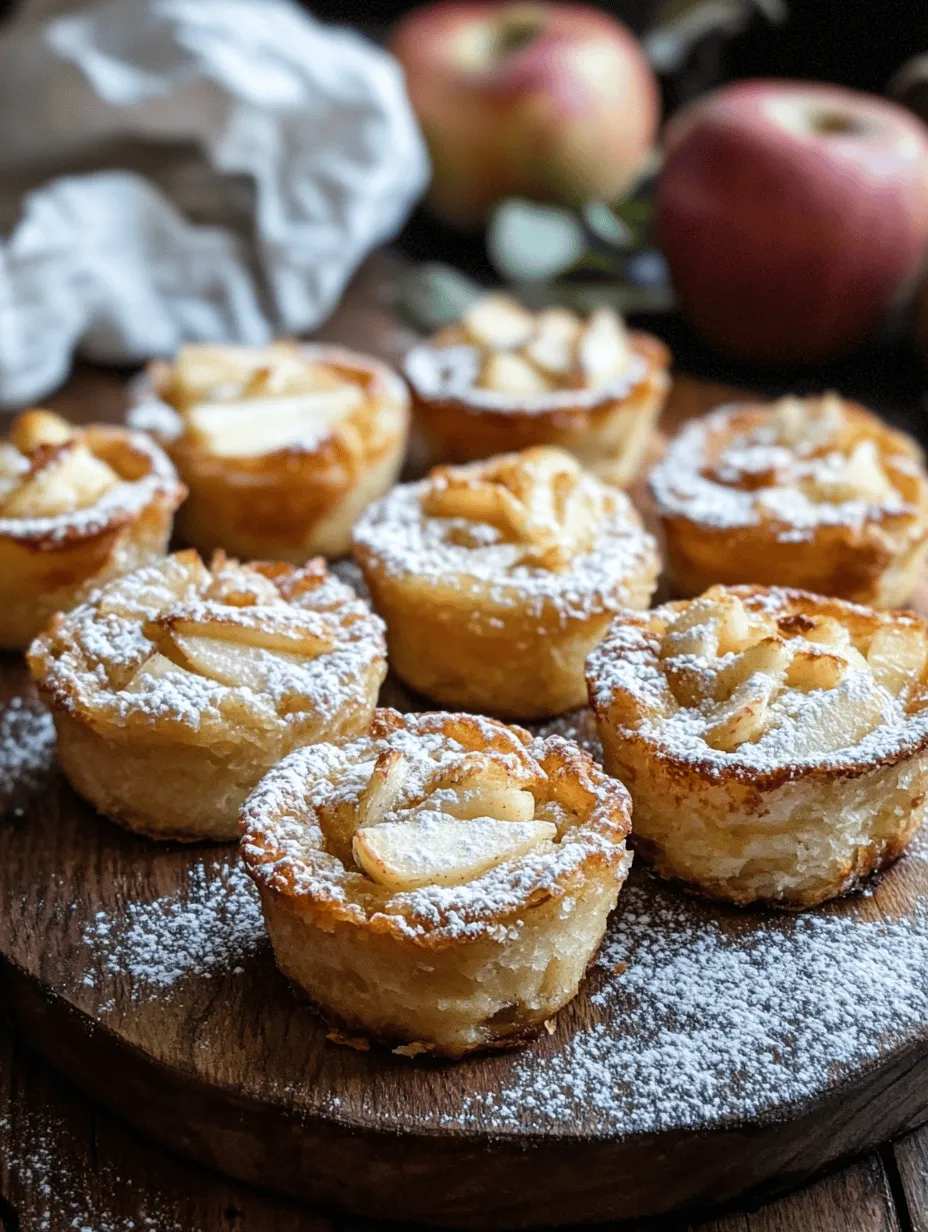When it comes to delightful desserts, few can rival the charm of apple fritter bites. These tantalizing treats perfectly marry the crisp tartness of fresh apples with the sweetness of a fluffy, airy batter, creating a bite-sized delight that is hard to resist. Whether enjoyed at gatherings, during a cozy family brunch, or simply as a sweet snack to satisfy your cravings, apple fritter bites are sure to impress. With their unique twist on traditional apple fritters, these mini delights bring joy to any occasion. In this comprehensive guide, we will explore the art of making these scrumptious bites, providing you with a detailed step-by-step approach along with valuable insights into the key ingredients and techniques that elevate this recipe.
Understanding Apple Fritter Bites
The Origins of Apple Fritters
Apple fritters boast a rich history that dates back centuries. Although their exact origins are difficult to trace, these delightful desserts have evolved into a beloved favorite across various cultures. The concept of frying fruits in a doughy batter can be found in many culinary traditions, from the German “Apfelküchle” to the American apple fritters we know today. Traditionally, apple fritters were made as a way to utilize excess fruit, particularly during the apple harvest season. Their popularity surged in the United States during the 19th century, particularly in the Midwest, where apple orchards thrived.
As time went on, apple fritters transformed into a popular dessert served at fairs and festivals, often drizzled with sweet glaze or dusted with powdered sugar. The modern version has seen variations that include spices, such as cinnamon and nutmeg, elevating the flavor profile. Today, apple fritter bites take the classic recipe and shrink it down to a manageable size, making them perfect for sharing and enjoying without the guilt of a larger dessert.
The Appeal of Miniature Treats
In recent years, miniature treats have gained immense popularity, and for good reason. Smaller portions not only offer a visually appealing presentation but also cater to the growing trend of mindful eating and portion control. Mini desserts allow individuals to indulge in their favorite flavors without overindulging, making them an ideal choice for gatherings, parties, and even casual get-togethers.
Apple fritter bites, in particular, benefit from this trend. Their bite-sized nature allows for easy snacking, and they can be enjoyed in a variety of settings, from brunch buffets to dessert platters. The versatility of these treats means they can be served warm or at room temperature, making them a convenient option for any occasion. Plus, who can resist the allure of a perfectly golden-brown fritter bite, with its soft, fluffy interior and delightful sweetness?
Ingredients Breakdown
To create the perfect apple fritter bites, it is essential to understand the role of each ingredient in the recipe. Here, we will break down the key components that contribute to the flavor, texture, and overall success of these delightful treats.
The Role of Apples in the Recipe
When it comes to selecting the best apples for your fritter bites, choosing the right variety is crucial. Not all apples are created equal, and certain types lend themselves better to frying and baking than others. Two standout varieties for this recipe are Granny Smith and Honeycrisp apples.
Granny Smith apples are renowned for their tartness, which provides a delightful contrast to the sweet batter. They hold their shape well when cooked, maintaining a pleasant texture and flavor that shines through in the finished fritters. On the other hand, Honeycrisp apples are known for their exceptional sweetness and crispness, adding a touch of natural sugar that enhances the overall taste of the fritter bites. Using a combination of both varieties can create a balanced flavor profile that is both sweet and tart, elevating your apple fritter bites to new heights.
The Science of Baking Powder and Flour
Baking powder and flour are the backbone of the batter that encases the apple filling. Flour serves as the primary structure-building ingredient, providing the stability needed for the fritter bites. The type of flour you choose can significantly impact the final texture, so opting for all-purpose flour is often recommended for a balanced result.
Baking powder, on the other hand, is a leavening agent that contributes to the light and airy texture of the fritters. It works by releasing carbon dioxide gas when it comes into contact with moisture and heat, causing the batter to rise. This results in a fluffy interior that contrasts beautifully with the crispy exterior. The right balance of baking powder is essential; too little may yield dense fritters, while too much can cause them to rise too quickly and collapse.
The Importance of Dairy and Eggs
Dairy and eggs play a pivotal role in enhancing the flavor and texture of your apple fritter bites. Milk adds moisture to the batter and contributes to a tender crumb. Whole milk is often preferred, as its fat content helps create a rich and creamy texture. If you’re looking for a dairy-free alternative, unsweetened almond milk or oat milk can work well, though the flavor may vary slightly.
Eggs are equally important in binding the ingredients together and providing structure. They add richness and moisture while helping to create a tender final product. The proteins in eggs also contribute to the overall texture, making the fritter bites more cohesive and less likely to fall apart during frying.
Choosing the Right Oil for Frying
Frying is a critical step in creating the perfect apple fritter bites, and the type of oil you choose can make a significant difference in flavor and texture. When selecting oil for frying, consider both the flavor profile and the smoke point.
Vegetable oil is a popular choice due to its neutral flavor and high smoke point, making it ideal for frying without overpowering the taste of the fritters. Canola oil is another excellent option, known for its light flavor and high smoke point. For those looking to add a touch of richness, peanut oil can be an excellent choice, although it may impart a slight nutty flavor to the fritters.
Regardless of the oil you choose, be sure to maintain the right frying temperature for optimal results. A temperature of around 350°F (175°C) is ideal for frying apple fritter bites, ensuring they cook evenly and develop a beautiful golden-brown crust.
Step-by-Step Guide to Making Apple Fritter Bites
Preparing the Apples: A Crucial First Step
The first step in creating delightful apple fritter bites is properly preparing the apples. Start by washing and peeling the apples to remove any dirt or residue. Next, core the apples and cut them into small, bite-sized pieces. The ideal size is approximately 1/2 inch, allowing them to cook evenly within the fritter batter.
For added flavor, consider tossing the apple pieces with a sprinkle of cinnamon or sugar before incorporating them into the batter. This step enhances the overall taste and infuses the fritters with a warm, inviting aroma. Once the apples are ready, set them aside while you prepare the batter, ensuring they stay fresh and crisp.
Creating the Perfect Batter
With the apples prepared, it’s time to create the batter that will encase your delicious apple pieces. In a large mixing bowl, combine the dry ingredients: all-purpose flour, baking powder, a pinch of salt, and any desired spices such as cinnamon or nutmeg. Whisking these ingredients together ensures an even distribution of flavors and leavening agents.
In a separate bowl, mix the wet ingredients: milk, eggs, and a splash of vanilla extract. Whisk until well combined, creating a creamy mixture that will add richness to the batter. Gradually incorporate the wet ingredients into the dry ingredients, stirring gently until just combined. Be cautious not to overmix; a few lumps are perfectly acceptable. The goal is to create a thick, smooth batter that will coat the apple pieces and hold them together during frying.
Once your batter is ready, fold in the prepared apple pieces, ensuring they are evenly coated. This step is crucial as it allows the apples to be enveloped in the batter, ensuring that each bite is filled with apple goodness. Your mixture should be thick enough to hold the apples in place but still fluid enough to drop easily from a spoon.
With the batter prepared and the apples coated, you are now ready to proceed to the frying stage, where the magic truly happens.
Stay tuned for the next part of our guide, where we will delve into the frying process, including tips for achieving the perfect golden-brown finish and a few finishing touches to elevate your apple fritter bites to new heights.

Crafting the Perfect Batter
Creating the ideal batter for your apple fritter bites is crucial to achieving that light and fluffy texture. Start by mixing your dry ingredients, including flour, sugar, baking powder, and a pinch of salt, in a large mixing bowl. This ensures that everything is evenly distributed. In a separate bowl, whisk together your wet ingredients—eggs, milk, and vanilla extract. The key here is to incorporate the wet ingredients gradually into the dry mixture, stirring gently until just combined. Aim for a thick but pourable consistency; it should coat the back of a spoon without being overly runny.
Consistency Checks: If your batter feels too thick, add a little more milk, one tablespoon at a time, until it reaches the desired consistency. Conversely, if it seems too thin, sprinkle in a bit more flour. This careful attention to the batter’s thickness will directly impact the texture of your fritters.
Folding in the Apples: Balancing Texture and Flavor
Once your batter is at the right consistency, it’s time to incorporate the star ingredient: the apples. Peel, core, and chop your apples into small, bite-sized pieces, ensuring that they are roughly uniform to promote even cooking. You can use a variety of apples, but Granny Smith or Honeycrisp are excellent choices for their balance of sweetness and tartness.
To fold the apple mixture into the batter, add the chopped apples to the bowl. Using a rubber spatula, gently lift and fold the batter over the apples, turning the bowl as you go. Be careful not to over-mix; the goal is to coat the apple pieces without breaking them down. Over-mixing can lead to a dense fritter rather than a light, airy bite.
Heating Oil: Safety and Temperature Control
Properly heating your oil is critical for frying apple fritter bites. Use a deep, heavy-bottomed pot or a deep fryer for consistent heat distribution. Fill the pot with enough oil to submerge the fritters—about 2-3 inches deep.
Temperature Control: Heat the oil over medium heat and use a deep-fry thermometer to monitor the temperature. The ideal frying temperature for apple fritters is between 350°F and 375°F. If you don’t have a thermometer, you can test the oil’s readiness by dropping a small dollop of batter into the oil. If it bubbles and rises to the surface, the oil is ready for frying.
Safety Tips: Always keep a close eye on the oil as it heats. Never leave it unattended, and be cautious of splatter. A lid or splatter guard can help minimize mess and enhance safety.
Frying the Fritter Bites: Techniques for Success
Frying your fritter bites requires careful attention to ensure they cook evenly and develop that golden-brown crust. Using a spoon or small ice cream scoop, carefully drop spoonfuls of the batter into the hot oil, making sure not to overcrowd the pot. Overcrowding can lower the oil temperature, resulting in greasy fritters.
Batch Frying: Fry in small batches, allowing enough space for the fritters to float freely. Fry each batch for about 3-4 minutes, or until they are golden brown on all sides. Use a slotted spoon to gently flip them halfway through frying to ensure even cooking.
To achieve that perfect golden hue, look for a rich, golden-brown color. If the fritters are browning too quickly, reduce the heat slightly to prevent burning. Once cooked, remove them from the oil and place them on a cooling rack lined with paper towels to drain any excess oil.
Draining and Dusting: Finishing Touches
After frying, it’s essential to properly drain your apple fritter bites to eliminate excess oil. Place the fritters on a wire rack or paper towels as mentioned. Allow them to cool for a few moments, then dust generously with powdered sugar. This not only adds a touch of sweetness but also enhances the visual appeal of your fritters.
For an extra special touch, consider adding a drizzle of glaze made from powdered sugar and milk or even a sprinkle of cinnamon sugar for additional flavor complexity.
Serving Suggestions and Pairings
Best Ways to Serve Apple Fritter Bites: Apple fritter bites are versatile and can be enjoyed in a variety of settings. For casual family gatherings, serve them warm on a rustic wooden platter accompanied by a side of caramel sauce for dipping. For festive occasions, consider presenting them on a tiered stand, garnished with fresh apple slices or cinnamon sticks for an inviting display.
Pairing Beverages with Fritter Bites: When it comes to beverages that complement the flavors of apple fritters, coffee is a classic choice. A rich, dark roast or a spiced chai latte can enhance the sweet and tart notes of the fritters. For those who prefer tea, a light herbal or cinnamon-infused tea will provide a lovely balance. If you’re looking for something more indulgent, consider pairing with a sweet dessert wine, such as a late-harvest Riesling, to elevate the experience.
Nutritional Information
Caloric Breakdown of Apple Fritter Bites: Understanding the nutritional profile of your homemade apple fritters can help you enjoy them more mindfully. Each fritter bite contains approximately 150-200 calories, depending on size and ingredients. The fritters are primarily composed of carbohydrates from flour and sugar, with a moderate amount of fat from the frying oil.
Healthier Alternatives and Modifications: For those seeking healthier options, consider using whole wheat flour instead of all-purpose flour to increase fiber content. You can also experiment with reducing the sugar or using alternatives such as coconut sugar or honey. Baking instead of frying is another option; simply place the fritter bites on a parchment-lined baking sheet and bake at 375°F for about 15-20 minutes, flipping halfway through for even cooking.
Conclusion: Embracing the Joy of Homemade Treats
Creating delightful apple fritter bites not only brings the warmth of homemade cooking into your kitchen but also allows you to share a beloved treat with family and friends. With their crispy exterior and soft, flavorful interior, these bites are sure to be a hit at any gathering. By following the steps outlined in this article, you will master the art of making these delightful snacks, ensuring that they become a cherished recipe in your culinary repertoire. Enjoy the creative process, and let the sweet aroma of freshly fried apple fritters fill your home!
With every batch you make, you’ll not only refine your skills but also create lasting memories with those you serve. So gather your ingredients, roll up your sleeves, and embrace the joy of homemade apple fritter bites today!


